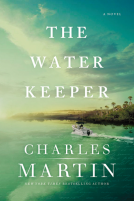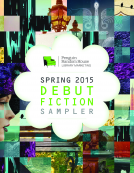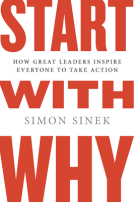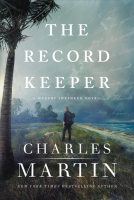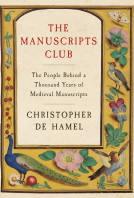
Slave Narratives of the Underground Railroad
by Christine Rudsel and Bob Blaisdell
This title was previously available on NetGalley and is now archived.
Send NetGalley books directly to your Kindle or Kindle app
1
To read on a Kindle or Kindle app, please add kindle@netgalley.com as an approved email address to receive files in your Amazon account. Click here for step-by-step instructions.
2
Also find your Kindle email address within your Amazon account, and enter it here.
Pub Date Sep 17 2014 | Archive Date Nov 06 2014
Description
During the 1850s and 1860s more than 100,000 people escaped slavery in the American South by following the Underground Railroad, a complex network of secret routes and safe houses. This inexpensive compilation of firsthand accounts offers authentic insights into the Civil War era and African-American history with compelling narratives by Frederick Douglass, Harriet Tubman, Sojourner Truth, and lesser-known refugees.
Thirty selections include the story of Eliza Harris, "The Slave Woman Who Crossed the Ohio River on the Drifting Ice with Her Child in Her Arms," whose experience inspired a memorable scene in Uncle Tom's Cabin. Other accounts include that of Henry "Box" Brown, who hid in a crate mailed to Philadelphia abolitionists; Theophilus Collins's escape after "A Desperate, Bloody Struggle—Gun, Knife and Fire Shovel, Used by Infuriated Master"; excerpts from Harriet Jacobs's 1861 narrative, Incidents in the Life of a Slave Girl; and the remarkable flight of William and Ellen Craft, "Female Slave in Male Attire, Fleeing as a Planter, with Her Husband as Her Body Servant."
Available Editions
| EDITION | Other Format |
| ISBN | 9780486780610 |
| PRICE | $4.50 (USD) |
Average rating from 19 members
Featured Reviews
 truusje s, Reviewer
truusje s, Reviewer
My goodreads review (4 stars):
When I was a child I had a record that told the story of Uncle Tom's Cabin. At the time I was too young to really understand it all, but one thing I have never forgotten was the part about Eliza who crossed a river by jumping from ice floe to ice floe ("en Eliza sprong van schots op schots" as my record said), all of that with a baby in her arms. I had never realised there was a real-life Eliza who escaped slavery in this way.
Slave Narratives of the Underground tells Eliza's story together with many others who managed to escape and make their way north. One woman remained hidden in some sort of attic for seven years, a man had himself nailed into a box, a woman dressed herself as a planter with her husband as faithful sevant, a man hid himself underneath a hotel for weeks. Story after incredible story, some heartbreaking. For example the woman who killed her young child rather than have it return to slavery.
Recently I have been surprised by how little I know about this very black page in history, and how few books I've come across over the years who deal with this subject. Therefore I was very interested in reading these narratives, and I wasn't disappointed. There were several very interesting stories in the book, however, I felt there were just too many that didn't really add anything to stories I had already read. Also, quite a few stories were very short; I would have preferred fewer but longer and with more depth. I realise the focus of this book is the narratives but I would have liked some more background information about slavery in general and the underground railroad (and the people involved) in specific. Since most of the stories were written down at the time by William Still, the language used was sometimes archaic and hard to understand. Still, I would recommend it to anyone interested in the subject.
 Reviewer 98309
Reviewer 98309
Slave Narratives of the Underground Railroad is definitely worth a read for those who want to know about the underground railroad history. I cannot imagine what slaves had to go through as slaves. I admire their courage and bravery to survive and their fight for freedom. I also admire those who help them gain their freedom. I enjoy the compiled stories from former slaves in this book. There are stories from several refugees, including Harriet Tubman and Frederick Douglas and other former slaves that were not as famous. The stories were so captivating to me. I can't believe people had to live this way not so long ago in US history. I found the book interesting and I must-read. Five stars.
 Melissa P, Reviewer
Melissa P, Reviewer
Loved this, and I'm not a big history buff. This was an eye-opener. I found myself worried and scared with the slaves. This will make you have an even deeper respect for those who went through slavery and all they endured.
I was given this book in exchange for an honest review via Netgalley.
This was a f as favorite topic in high school. I really enjoyed this book.
 Librarian 105878
Librarian 105878
I have to admit that I don't know nearly as much as I should about the struggle of slaves in America and their flight to freedom and emancipation, despite the fact that there's an slavery underground house just a few blocks from my home. Certainly I've read about it in history classes, but it was always just a concept that we read about, to me.
What this collection did was make it much more personal, because the essays included are told by the slaves who have escaped to freedom. Here, the horrors of slavery become real ("I think slavery is the next thing to hell. If a person would send another into bondage, he would, it appears to me, be bad enough to send him into hell, if he could" says Harriet Tubman). To endure what these people did; to be hunted; to hide at day and move at night in unfamiliar territory; to leave behind family (if they weren't already sold and sent away) ... the conditions for these people had to be absolutely horrific.
I think this came clearest for me in the very simple "Letter from His Old Mistress and His Reply" by Reverend J. W. Loguen. A woman (clearly down on her luck after her husband has passed away) writes a letter to her runaway, former slave, trying to convince him to buy his freedom for $1000 and appeals to his Christian charity. His response is tremendous.
All of the essays and recollections here are really great (in an educational way for those of us who can never imagine this sort of life). I was also moved by "Incidents in the Life of a Slave Girl" by Harriet Jacobs and "Born on a Slave Ship" by Margaret. But truly, everything here is powerful and reminds the reader how strong these people had to be to do what they did ... and of course these are only some of the stories from those who successfully made the escape to freedom.
This book contains the following essays:
"Arrived by Adams' Express" (Henry Box Brown) by William Sill
"Narrative of William Wells Brown, a Fugitive Slave (excerpt)" by William Wells Brown
"Ex-President Tyler's Household Loses an Aristocratic "Article"" (James Hambleton Christian) by William Still
"Arrival from Delaware, 1858: A Desperate, Bloody Struggle - Gun, Knife and Fire Shovel, Used by an Infuriated Master" (Theophilus Collins) by William Still
"An Abolitionist in the Underground" (Seth Concklin) by William Still
"Narrative of the Life of Frederick Douglas" by Frederick Douglas
"Blood Flowed Freely: Two Passengers Secreted in a Vessel Loaded with Spirits of Turpentine p Shrouds Prepared t Prevent Being Smoked to Death" (Abram Galloway and Richard Eden) by William Still
"The Slave Mother Who Killed Her Child Rather Than See It Taken Back to Slavery" (Margaret Garner) by Levi Coffin
"Fleeing from Davis, a Negro Trader, Secreted Under a Hotel, Up a Tree, Under a Floor, in a Thicket, on a Steamer" (Charles Gilbert) by William Still
“How Their Grandpa Brought Emancipation to Loads of Slaves” (Arnold Gragston) by Federal Writers’ Project American Guide, Pearl Randolph
"Ten Years in the Penitentiary for Having a Copy of Uncle Tom’s Cabin" (Samuel Green, alias Wesley Kinnard) by William Still
"Slave-Holder in Maryland with Three Colored Wives" (Jamie Griffin, alias Thomas Brown) by William Still
"Arrival from North Carolina, 1857—Feet Slit for Running Away, Flogged, Stabbed, Stayed in the Hollow of a Big Poplar Tree, Visited by a Snake, Abode in a Cave" (Harry Grimes) by William Still
"The Slave-Hunting Tragedy in Lancaster County, in September 1851: Treason at Christiana" (James Hamlet and Others) by William Still
"The Slave Woman Who Crossed the Ohio River on the Drifting Ice with Her Child in Her Arms" (Eliza Harris) by Levi Coffin
"The Life of Josiah Henson, Formerly a Slave, Now an Inhabitant of Canada, as Narrated by Himself (1849)" by Josiah Henson
"Five Years and One Month Secreted" (John Henry Hill) by William Still
"Arrival from Maryland, 1859" (Ann Maria Jackson and Her Seven Children) by William Still
"Incidents in the Life of a Slave Girl (1861)" by Harriet Jacobs
"Trial of the Emancipators of Col. J. H. Wheeler’s Slaves, Jane Johnson and Her Two Little Boys" (Jane Johnson) by William Still
"Arrival from the Old Dominion: Nine Very Fine 'Articles'" (Lew Jones, Oscar Payne, Mose Wood, Dave Diggs, Jack, Hen, and Bill Dade, and Joe Ball) by William Still
"Letter from His Old Mistress and His Reply [The Liberator]" by Reverend J.W. Loguen
"Arrivals from Different Places: Captured and Carried Back" (Matilda Mahoney and Dr. J. W. Pennington’s Brother and Sons) by William Still
"Born on a Slave Ship" (Margaret) by Eber M. Pettit
"Arrival from Virginia, 1858" (Mary Frances Melvin, Eliza Henderson, and Nancy Grantham) by William Still
"Seeing a Ray of Hope She Availed Herself of the Opportunity to Secure Her Freedom” (Aunt Hannah Moore) by William Still
"Arrival from Virginia, 1858" (Alfred S. Thornton) by William Still
"Narrative of Sojourner Truth" by Sojourner Truth
"Harriet Tubman: The Moses of her People)" and "'Moses' Arrives with Six Passengers" (Harriet Tubman) by William Still
"Escape from Alabama Is Almost Impossible" (Philip Younger) by Benjamin Drew Appendix: The Fugitive Slave Act of 1850: “An Act Respecting Fugitives from Justice, and Persons Escaping from the Service of Their Masters” [United States Congress]
Bibliography
This is an important book and it really should be read by all high school and college students.
Looking for a good book? Editors Christine Rudisel and Bob Blaisdell have put together a fantastic collection of stories of slaves who have managed to make it to freedom with this book, Slave Narratives of the Underground Railroad.
I received a digital copy of this book from the publisher, through Netgalley, in exchange for an honest review.
